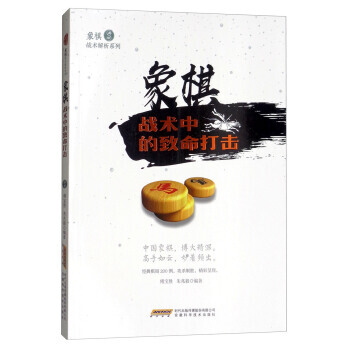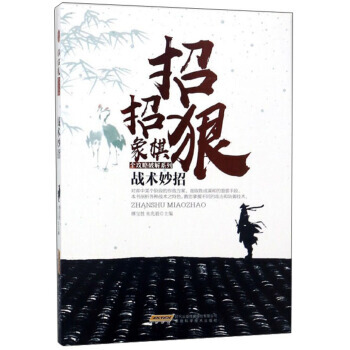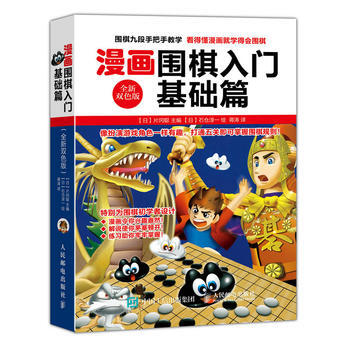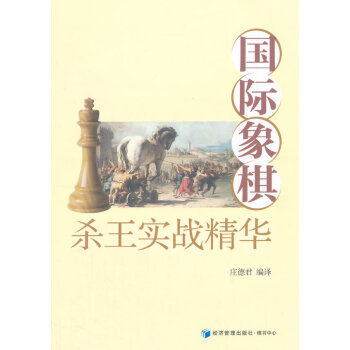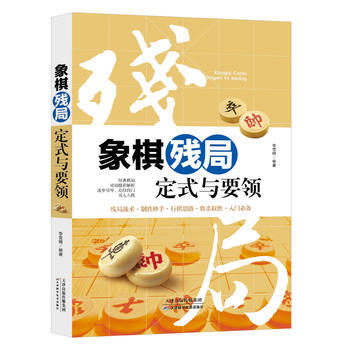具體描述
基本信息
書名:象棋戰術中的緻命打擊/象棋戰術解析係列
定價:20.00元
作者:傅寶勝,硃兆毅
齣版社:安徽科學技術齣版社
齣版日期:2017-06-01
ISBN:9787533772383
字數:
頁碼:148
版次:1
裝幀:平裝
開本:16開
商品重量:0.4kg
編輯推薦
內容提要
運用戰術技巧有兩大顯著特徵:一是鞏固擴大優勢,直至攻殺製勝;二是處於劣勢局麵時,往往能夠化驗為夷起死迴生,有爭勝謀和之功效。
《象棋戰術中的緻命打擊/象棋戰術解析係列》共分五章,精選國內外重大賽事中的經典棋例200例,皆為攻殺製勝型,書末係統介紹瞭施展戰術要達到的十三種戰術目的,以及對二十五種常用的戰術名詞加以解讀,便於讀者對戰術的理解和恰當的運用。編寫該書的目的旨在為棋友們學習、欣賞、研究象棋大師們的棋藝提供一個指導性的平颱,對提高實戰中戰術運用的技巧有所幫助。
目錄
章 棄子搶殺一劍封喉(共40局 )
局 睏子戰術——萬春林揚象睏馬
第2局 閃擊戰術——莊玉庭閃車捉卒
第3局 記子戰術——苗永鵬兌子硬拼
第4局 冷著戰術——徐天紅冷著製勝
第5局 牽製戰術——楊德琪橫牽謀炮
第6局 兌子戰術——郭莉萍三兌取勢
第7局 引離戰術——張國鳳槽馬引車
第8局 牽製戰術——文靜妙牽成巧和
第9局 捉子戰術——於幼華退馬雙捉
0局 閃擊戰術——黨斐連施閃擊戰
1局 棄予戰術——陳富傑貪車緻敗
2局 堵塞戰術——黃泗妙演“鐵門栓”
3局 封鎖戰術——莊宏明橫卒封車
4局 閃擊戰術——“雄鷹”展翅破敵營
5局 雙重威脅——伍霞進車呈雙殺
6局 兌予戰術——勵嫻連兌構絕殺
7局 抽將戰術——梅娜爭先造抽將
8局 抽將戰術——王利紅烈馬抽車
9局 吸引戰術——陳麗淳調敵爭先
第20局 棄子戰術——王小雨棄車入局
第21局 牽製戰術——謝靖慘遭全牽製
第22局 吸引戰術——鄔正偉棄車吸引
第23局 攔截戰術——陳孝堃棄馬攔截
第24局 吸引戰術——徐天紅海底撈月
第25局 運子戰術——黎德誌調運取勢
第26局 捉子戰術——歐棋亮頻捉殺入
第27局 抽將戰術——鄭一泓騰挪抽馬
第28局 封鎖戰術——鎖帥門一氣嗬成
第29局 捉子戰術——譚邦捉運巧組閤
第30局 騰挪戰術——“牡丹王”運子騰挪
第31局 棄子戰術——高維鉉棄車成“癖”
第32局 睏子戰術——孫勇徵睏馬有方
第33局 棄子戰術——郭瑞霞棄子攻殺
第34局 兌子戰術——鄭熙明兌車入局
第35局 引離戰術——宋國強棄車引離
第36局 抽將戰術——鄭一泓兩抽製勝
第37局 閃擊戰術——萬春林退炮獻車
第38局 攔截戰術——徐天紅妙施攔截
第39局 棄子戰術——高維雄兩度棄車
第40局 閃擊戰術——謝巋妙閃銜車炮
第二章 鎖帥門一氣嗬成(共40局 )
局 攔截戰術——謝巋炮攔車取勢
第2局 兌子戰術——金鬆一兵兌雙士
第3局 捉子戰術——“拼命三郎”捉死車
第4局 雙重威脅——“梁山帥哥”成“霸業”
第5局 騰挪戰術——鬍慶陽四麵楚歌
第6局 封鎖戰術——靳玉硯封鎖建功
第7局 騰挪戰術——卓贊烽運子騰挪
第8局 雙重威脅——雙重威脅成勝果
第9局 棄子戰術——“全民空投”棄車贏
0局 等著戰術——鬍榮華妙用等著
1局 抽將戰術——陳富傑寡不敵眾
2局 堵綉戰術——王琳娜一招製勝
3局 誘著戰術——鬍明巧施誘敵計
4局 吸引戰術——趙寅妙手引黑炮
5局 捉子戰術——文靜勇挫張國鳳
6局 兌子戰術——王琳娜巧兌賺馬
7局 抽將戰術——鬍榮華智取銀川
8局 吸引戰術——“電腦”勇挫陶漢明
9局 騰挪戰術——汪洋騰挪奏凱歌
第20局 引離戰術——張曉平先棄後取
第21局 棄子戰術——棄馬搶攻搏生死
第22局 堵塞戰術——宋國強阻炮成功
第23局 睏子戰術——黃仕清退炮睏車
第24局 引離戰術——棄車引離鑄勝局
第25局 冷著戰術——炮轟仕冷著製勝
第26局 抽將戰術——劉殿中大戰王斌
第27局 迂迴戰術——陶漢明駿馬盤鏇
第28局 封鎖戰術——運炮封鎖見功力
第29局 睏子戰術——申鵬妙施睏馬術
第30局 騰挪戰術——曾啓泉運子騰挪
第31局 捉子戰術——陳種追擊謀子贏
第32局 騰挪戰術——陸偉韜顧此失彼
第33局 睏子戰術——牛保明睏子攻殺
第34局 堵塞戰術——韓冰力戰郭莉萍
第35局 兌子戰術——“呼延灼”智取“太陽”
第36局 解殺還殺——陳麗淳解殺還殺
第37局 捉子戰術——陳泓盛三捉奏功
第38局 運子戰術——汪洋運馬巧攻殺
第39局 吸引戰術——劉君力挫尤穎欽
第40局 棄子戰術——蔣鳳山棄車催殺
……
第三章 封堵騰挪一招製勝(共40局 )
第四章 少牽多運蟒纏身(共40局 )
第五章 施冷著圖窮匕現(共40局 )
附錄 象棋戰術名詞術語選釋
作者介紹
文摘
序言
章 棄子搶殺一劍封喉(共40局 )
局 睏子戰術——萬春林揚象睏馬
第2局 閃擊戰術——莊玉庭閃車捉卒
第3局 記子戰術——苗永鵬兌子硬拼
第4局 冷著戰術——徐天紅冷著製勝
第5局 牽製戰術——楊德琪橫牽謀炮
第6局 兌子戰術——郭莉萍三兌取勢
第7局 引離戰術——張國鳳槽馬引車
第8局 牽製戰術——文靜妙牽成巧和
第9局 捉子戰術——於幼華退馬雙捉
0局 閃擊戰術——黨斐連施閃擊戰
1局 棄予戰術——陳富傑貪車緻敗
2局 堵塞戰術——黃泗妙演“鐵門栓”
3局 封鎖戰術——莊宏明橫卒封車
4局 閃擊戰術——“雄鷹”展翅破敵營
5局 雙重威脅——伍霞進車呈雙殺
6局 兌予戰術——勵嫻連兌構絕殺
7局 抽將戰術——梅娜爭先造抽將
8局 抽將戰術——王利紅烈馬抽車
9局 吸引戰術——陳麗淳調敵爭先
第20局 棄子戰術——王小雨棄車入局
第21局 牽製戰術——謝靖慘遭全牽製
第22局 吸引戰術——鄔正偉棄車吸引
第23局 攔截戰術——陳孝堃棄馬攔截
第24局 吸引戰術——徐天紅海底撈月
第25局 運子戰術——黎德誌調運取勢
第26局 捉子戰術——歐棋亮頻捉殺入
第27局 抽將戰術——鄭一泓騰挪抽馬
第28局 封鎖戰術——鎖帥門一氣嗬成
第29局 捉子戰術——譚邦捉運巧組閤
第30局 騰挪戰術——“牡丹王”運子騰挪
第31局 棄子戰術——高維鉉棄車成“癖”
第32局 睏子戰術——孫勇徵睏馬有方
第33局 棄子戰術——郭瑞霞棄子攻殺
第34局 兌子戰術——鄭熙明兌車入局
第35局 引離戰術——宋國強棄車引離
第36局 抽將戰術——鄭一泓兩抽製勝
第37局 閃擊戰術——萬春林退炮獻車
第38局 攔截戰術——徐天紅妙施攔截
第39局 棄子戰術——高維雄兩度棄車
第40局 閃擊戰術——謝巋妙閃銜車炮
第二章 鎖帥門一氣嗬成(共40局 )
局 攔截戰術——謝巋炮攔車取勢
第2局 兌子戰術——金鬆一兵兌雙士
第3局 捉子戰術——“拼命三郎”捉死車
第4局 雙重威脅——“梁山帥哥”成“霸業”
第5局 騰挪戰術——鬍慶陽四麵楚歌
第6局 封鎖戰術——靳玉硯封鎖建功
第7局 騰挪戰術——卓贊烽運子騰挪
第8局 雙重威脅——雙重威脅成勝果
第9局 棄子戰術——“全民空投”棄車贏
0局 等著戰術——鬍榮華妙用等著
1局 抽將戰術——陳富傑寡不敵眾
2局 堵綉戰術——王琳娜一招製勝
3局 誘著戰術——鬍明巧施誘敵計
4局 吸引戰術——趙寅妙手引黑炮
5局 捉子戰術——文靜勇挫張國鳳
6局 兌子戰術——王琳娜巧兌賺馬
7局 抽將戰術——鬍榮華智取銀川
8局 吸引戰術——“電腦”勇挫陶漢明
9局 騰挪戰術——汪洋騰挪奏凱歌
第20局 引離戰術——張曉平先棄後取
第21局 棄子戰術——棄馬搶攻搏生死
第22局 堵塞戰術——宋國強阻炮成功
第23局 睏子戰術——黃仕清退炮睏車
第24局 引離戰術——棄車引離鑄勝局
第25局 冷著戰術——炮轟仕冷著製勝
第26局 抽將戰術——劉殿中大戰王斌
第27局 迂迴戰術——陶漢明駿馬盤鏇
第28局 封鎖戰術——運炮封鎖見功力
第29局 睏子戰術——申鵬妙施睏馬術
第30局 騰挪戰術——曾啓泉運子騰挪
第31局 捉子戰術——陳種追擊謀子贏
第32局 騰挪戰術——陸偉韜顧此失彼
第33局 睏子戰術——牛保明睏子攻殺
第34局 堵塞戰術——韓冰力戰郭莉萍
第35局 兌子戰術——“呼延灼”智取“太陽”
第36局 解殺還殺——陳麗淳解殺還殺
第37局 捉子戰術——陳泓盛三捉奏功
第38局 運子戰術——汪洋運馬巧攻殺
第39局 吸引戰術——劉君力挫尤穎欽
第40局 棄子戰術——蔣鳳山棄車催殺
……
第三章 封堵騰挪一招製勝(共40局 )
第四章 少牽多運蟒纏身(共40局 )
第五章 施冷著圖窮匕現(共40局 )
附錄 象棋戰術名詞術語選釋
chess tactics: The Killer Blows The game of chess, a timeless battle of wits and strategy, unfolds across sixty-four squares, each move a carefully considered step towards victory or a potential misstep leading to ruin. At its heart lies the captivating world of tactics – the short-term maneuvers designed to exploit an opponent's weaknesses, seize an advantage, and ultimately, deliver a decisive blow. This book delves deep into the intricate art of chess tactics, dissecting the most potent and effective methods that have shaped countless games and crowned numerous champions. From the foundational principles of forks and pins to the sophisticated interplay of discovered attacks and sacrifices, this comprehensive exploration offers a rich tapestry of tactical concepts. We will journey through the annals of chess history, examining classic examples and modern masterpieces, to understand how these tactical elements are woven into the fabric of brilliant play. The aim is not merely to present a catalog of tactical motifs, but to cultivate a deep understanding of why they work, when to employ them, and how to recognize opportunities that others might overlook. Chapter 1: The Pillars of Tactical Vision – Forks, Pins, and Skewers Every chess player, from novice to grandmaster, begins their tactical journey with the fundamental building blocks. This chapter focuses on the three most elementary yet devastating tactical devices: the fork, the pin, and the skewer. The Fork: A single piece attacking two or more enemy pieces simultaneously. We will explore various types of forks, including knight forks, pawn forks, and queen forks, and analyze their impact on board control and material advantage. Understanding how to create and defend against forks is paramount to survival and dominance. We will examine scenarios where a seemingly innocuous move unleashes a devastating fork, leading to immediate material loss for the unsuspecting opponent. The psychology of the fork – the impossible choice it presents – will also be discussed. The Pin: A piece rendered immobile or severely restricted in its movement because attacking it would expose a more valuable piece or the king to capture. We will differentiate between absolute pins (where moving the pinned piece results in the immediate loss of the king) and relative pins (where moving the pinned piece leads to the loss of other valuable material). The strategic implications of pins, such as creating defensive weaknesses or setting up subsequent attacks, will be thoroughly investigated. Examples will be drawn from games where players have masterfully exploited pins to dismantle their opponent's defenses. The Skewer: The inverse of a pin, where a more valuable piece is attacked, and if it moves, a less valuable piece behind it is captured. This subtle but powerful tactic can be used to win material or force advantageous exchanges. We will explore how skewers can be employed with various pieces and the conditions under which they are most effective. The book will guide the reader in recognizing the conditions ripe for a skewer and how to capitalize on such opportunities. Chapter 2: The Art of Exploitation – Discovered Attacks and Discovered Checks Beyond the basic trio, tactics begin to reveal their more sophisticated nature. This chapter introduces the concepts of discovered attacks and discovered checks, which leverage the power of movement to create unexpected threats. Discovered Attacks: When a piece moves out of the way, revealing an attack from another piece behind it. This tactic can create multiple threats simultaneously, often overwhelming the opponent. We will analyze the effectiveness of discovered attacks in various positions, demonstrating how they can be used to win material, force checkmate, or disrupt the opponent's coordination. The element of surprise inherent in discovered attacks will be highlighted as a crucial factor in their success. Discovered Checks: A specific and particularly potent form of discovered attack, where the revealed attack is a check on the enemy king. This forces the opponent to deal with the immediate threat to their king, often at the expense of other considerations. We will delve into the strategic importance of discovered checks, examining how they can be used to gain tempo, force king movement into disadvantageous positions, and ultimately, contribute to mating attacks. The concept of a "double check" – where the piece moving delivers check and the piece revealed also delivers check – will also be explored in its full ferocity. Chapter 3: Sacrifices – The Price of Victory Tactics often demand a price. This chapter explores the realm of sacrifices, where material is willingly given up for a greater advantage. Material Sacrifices for Attack: Giving up a pawn, piece, or even the queen to open lines, deflect defenders, or create mating threats. We will analyze the principles behind successful sacrifices, emphasizing the need for clear follow-up lines and a decisive advantage gained from the sacrifice. The psychological impact of a sacrifice on an opponent can be as potent as the tactical outcome itself. Sacrifices for Positional Advantage: Beyond immediate material gain, sacrifices can also be employed to gain long-term positional advantages, such as controlling key squares, disrupting pawn structures, or creating outposts for one's own pieces. This chapter will illuminate how seemingly unsound sacrifices can be strategically justified when they lead to a decisive positional grip. Thematic Sacrifices: Certain tactical patterns, like the Bxh7+ sacrifice on f7 or g7, are so common and effective that they have become recognized as "thematic sacrifices." We will identify and analyze these recurring motifs, providing readers with a keen eye for their appearance on the board. Chapter 4: The Maestro's Toolkit – Combinations and Mating Patterns Building upon the foundational tactical elements, this chapter focuses on how these concepts are combined to create sequences of moves that lead to a decisive advantage or checkmate. The Art of Combination: A sequence of moves involving two or more tactical ideas, often including sacrifices, designed to achieve a specific goal. We will break down the process of constructing combinations, from identifying the initial spark of an idea to calculating the precise variations. The importance of forcing moves and clear objectives in a combination will be stressed. Common Mating Patterns: Recognizing and executing standard mating patterns is a crucial skill for any tactician. This section will cover fundamental checkmating patterns such as back-rank mates, smothered mates, Anastasia's mate, and Legal's mate, among others. The focus will be on understanding the underlying tactical principles that enable these mates and how to set them up. Prophylaxis in Tactics: While this book focuses on offensive tactics, understanding defensive principles is equally vital. We will briefly touch upon how proactive defensive play can often neutralize an opponent's tactical threats, thus highlighting the interconnectedness of offensive and defensive strategies. Chapter 5: Developing Your Tactical Eye – Practice and Calculation The most brilliant tactical ideas remain dormant without the ability to recognize them and calculate their consequences. This final chapter is dedicated to cultivating these essential skills. The Importance of Calculation: The ability to foresee sequences of moves and their outcomes is the bedrock of tactical proficiency. We will discuss methods for improving calculation skills, including visualization techniques, identifying candidate moves, and the concept of forcing variations. The Power of Practice: Chess tactics are best honed through rigorous practice. This chapter will provide guidance on how to effectively solve tactical puzzles, analyze your own games for tactical oversights, and learn from the tactical brilliance of the world's best players. The reader will be encouraged to actively engage with tactical exercises to solidify their understanding. Recognizing Tactical Opportunities: Beyond rote memorization, developing an intuitive "tactical sense" is key. We will discuss how to cultivate this by understanding pawn structures, king safety, piece activity, and imbalances on the board, all of which can signal potential tactical opportunities. This book is more than just a collection of tactical problems; it is an invitation to a deeper appreciation of the dynamic and exciting possibilities that lie within the game of chess. By understanding and mastering these tactical principles, players will not only elevate their game but will also unlock a new level of enjoyment and engagement with the "royal game." The goal is to equip the reader with the knowledge and practice to transform fleeting opportunities into decisive, game-winning blows.
